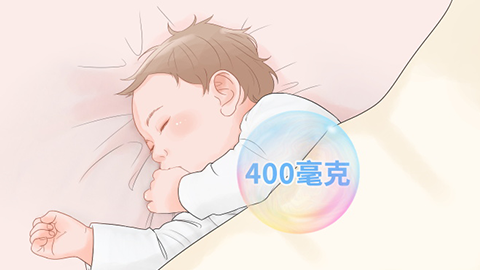What symptoms might infant difficulty falling asleep indicate?
Generally, symptoms that may accompany infant sleep difficulties include persistent crying when falling asleep, frequent awakenings after sleep onset, dependency on specific soothing methods to fall asleep, frequent body movements during sleep initiation, and delayed sleep onset exceeding one hour. Detailed analysis is as follows:
1. Persistent crying when falling asleep
When infants are unable to transition smoothly into sleep, they often cry to express discomfort. This may be caused by hunger, a wet diaper, unsuitable environmental temperature, or mild physical pain. At this time, check whether the infant's basic needs are met, change the diaper, feed the baby, or adjust the room temperature. If crying persists, gently patting the infant's back can help soothe discomfort and promote sleep onset.

2. Frequent awakenings after sleep onset
If an infant wakes up every ten to thirty minutes after falling asleep and has difficulty falling back asleep quickly, it may be related to a noisy sleep environment or excessive light. It could also be caused by increased nervous system excitability due to vitamin D deficiency. Parents should create a quiet and dim sleep environment for the infant and, under a doctor's guidance, supplement with vitamin D drops, calcium carbonate D3 granules, or calcium gluconate oral solution to help regulate nerve function and reduce the frequency of awakenings.
3. Dependency on specific soothing methods for sleep
If an infant must rely on being held, nursing, or using a pacifier to fall asleep, and struggles to fall asleep without these specific soothing methods, it is a typical symptom of sleep difficulties. This situation is often caused by long-term不良 sleep habits. Gradually reduce dependency on these specific soothing methods, such as trying to place the infant in bed and gently patting them to sleep instead of holding them, to help develop independent sleep skills.
4. Frequent body movements during sleep onset
During the process of preparing for sleep, if an infant exhibits frequent body twisting, leg kicking, facial flushing, and other behaviors, it might be caused by intestinal gas, gastrointestinal discomfort, or tight clothing restricting body movement. First, check whether the infant's clothing is loose. If intestinal gas is suspected, burp the infant promptly after feeding or gently massage the infant's abdomen in a clockwise direction to promote gas release, alleviate discomfort, reduce body movements, and help the infant fall asleep smoothly.
5. Sleep onset delay exceeding one hour
If an infant remains awake for more than one hour during their regular sleep time and shows signs of irritability and resistance, this is considered a symptom of delayed sleep onset. It may be caused by excessive daytime sleep disrupting the routine or overexcitement before bedtime. Adjust the infant's sleep-wake schedule, control daytime napping time, avoid excessive stimulation one hour before bedtime, and help the infant relax by telling stories or listening to gentle music to shorten the time needed to fall asleep.
In addition, infant sleep difficulties may also be accompanied by symptoms such as night sweats and枕秃 (hair loss at the back of the head). In daily life, it is important to establish a regular sleep schedule for the infant, maintain a fixed bedtime, and keep a stable sleep environment. If symptoms persist for more than one week, it is recommended to seek timely medical attention to rule out the possibility of underlying medical conditions.







